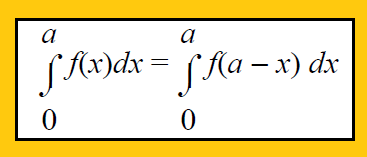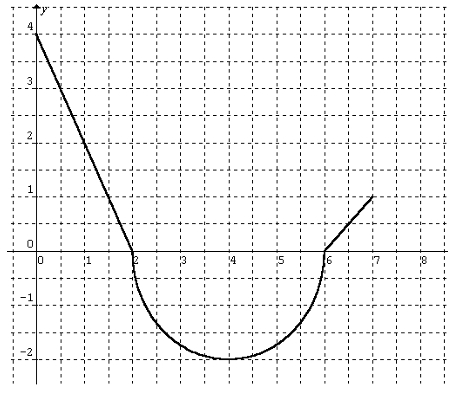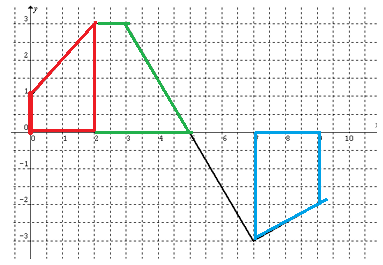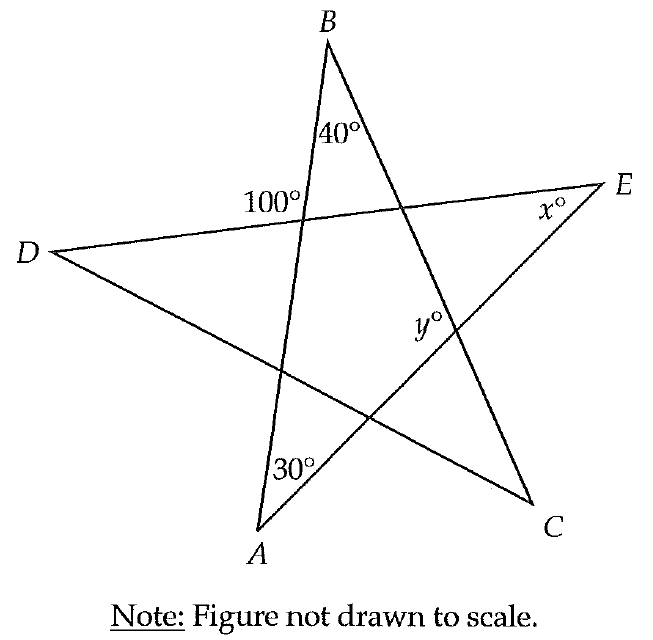PROPERTIES OF DEFINITE INTEGRALS WITH EXAMPLES
Property 1 :
Integration is independent of change of variables provided the limits of integration remain the same.

Property 2 :
If the limits of definite integral are interchanged, then the value of integral changes its sign only.

Property 3 :

Property 4 :

Property 5 :
If f(x) is integrable on a closed interval containing the three numbers a, b and c, then regardless of the order of a, b and c.

Property 6 :

Property 7 :

Property 8 :

Examples on Properties of Integrals
Example 1 :
Evaluate
Solution :
Since the upper and lower limit they are numerically equal and signs alone different, we have to check if the given function is odd or even.
Let f(x) = x3 sin2x
To find f(-x), we have to apply -x for x. So,
f(-x) = (-x)3 [sin (-x)]2
= -x3 [-sin x]2
f(-x) = -x3 [sin2 x]
It is proved that f(-x) = -f(x)
Then it is odd function.
Example 2 :
Solution :
Since the upper and lower limit they are numerically equal and signs alone different, we have to check if the given function is odd or even.
Let f(x) = log [(3 - x) / (3 + x)]
Put x = -x
f(-x) = log [(3 - (-x)) / (3 + (-x))]
= log [(3 + x) / (3 - x)]
= log (3 + x) - log (3 - x)]
= log (3 + x) - log (3 - x)
= -[ log (3 - x) - log (3 + x)]
= -[log (3 - x)/(3 + x)]
f(-x) = -f(x)
So, it is odd function.
Example 3 :
Solution :
Let f(x) = x sin x
Put x = -x
f(-x) = -x sin (-x)
= x sin x
f(-x) = f(x)
So, it is even function.
u = x, dv = sin x
u'= 1 and v = -cos x
Example 4 :
Solution :
Let f(x) = sin2 x
Put x = -x
f(-x) = [sin(-x)]2
= sin2 x
f(-x) = f(x)
So, it is even function.
Example 5 :
Solution :
Example 6 :
Solution :
Example 7 :
Solution :
Example 8 :
Given that
find the following
|
i) |
ii) |
|
iii) |
iv) |
Solution :
i)
= 10 + 3
= 13
ii)
iii)
iv)
= 3(10)
= 30
Example 9 :
The graph of g(x) is shown. Evaluate each integral by interpreting it in terms of areas.

i)
ii)
iii)
Solution :
i)

In between the interval 0 and 2, we see the triangle
Area of triangle = (1/2) x base x height
By observing the triangle, base = 2, height = 4
= (1/2) x 2 x 4
= 4 square units.
ii)
In between the interval 2 and 6, we see the shape semicircle.
Area of semicircle = (1/2) πr2
Diameter = 4 units, radius = 2
= (1/2) π(2)2
= 2π square units
Since the portion lies below the x-axis,
iii)
By observing the curve in between 6 to 7, we see the shape triangle.
Area of triangle = (1/2) x base x height
By observing the triangle, base = 1, height = 1
= (1/2) x 1 x 1
= 0.5 square units.
= 4.5 - 2(3.14)
= 4.5 - 6.28
= -1.78
Example 10 :
The graph of f(x) is shown. Evaluate each integral by interpreting it in terms of areas.

i)
ii)
iii)
iv)
Solution :
i)
By observing the figure from 0 to 2, we see the shape called trapezium.

Area of trapezium = (1/2) x h (a + b)
Here a and b are parallel sides.
height (h) = 2, a = 1, b = 3
Applying these values in the formula, we get
= (1/2) x 2 (1 + 3)
= (1/2) x 2 x 4
= 4
ii)
We divide the interval in between 0 to 5 as two parts.
In between 0 to 2, we see the shape trapezium and in between 2 to 5 also we see the trapezium.

Finding area in between 2 to 5 :
Area of trapezium = (1/2) x h (a + b)
Here a and b are parallel sides.
height (h) = 3, a = 1, b = 3
Applying these values in the formula, we get
= (1/2) x 3 x (1 + 3)
= (1/2) x 3 x 4
= 6
Then,
= 4 + 6
= 10
iii)
By observing the curve in between 5 and 7, we see the shape triangle and it lies below the x-axis.
Area of triangle = (1/2) x base x height
base = 2, height = 3
= (1/2) x 2 x 3
= 3
Since it lies below the x-axis, the answer should be -3.
iv)
To find total area, we add

In between 7 to 9, we have trapezium.
height = 2, parallel sides a = 3 and b = 2
Area of trapezium = (1/2) x h x (a + b)
= (1/2) x 2 x (3 + 2)
= 5
Since it lies below the x-axis, the answer should be -5.
Finding the total, we get
= 4 + 6 + (-3) + (-5)
= 10 - 8
= 2
So, the answer is 2.
Kindly mail your feedback to v4formath@gmail.com
We always appreciate your feedback.
©All rights reserved. onlinemath4all.com
Recent Articles
-
Digital SAT Math Problems and Solutions (Part - 134)
Apr 02, 25 12:40 AM
Digital SAT Math Problems and Solutions (Part - 134) -
SAT Math Resources (Videos, Concepts, Worksheets and More)
Apr 02, 25 12:35 AM
SAT Math Resources (Videos, Concepts, Worksheets and More) -
Digital SAT Math Problems and Solutions (Part 135)
Apr 02, 25 12:32 AM
Digital SAT Math Problems and Solutions (Part 135)

